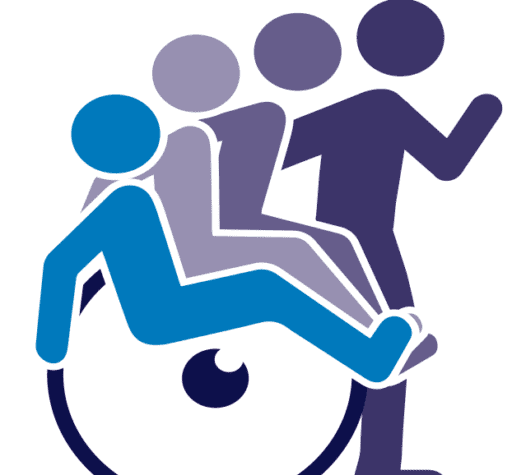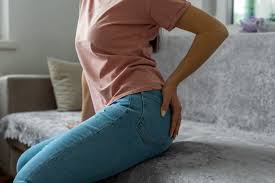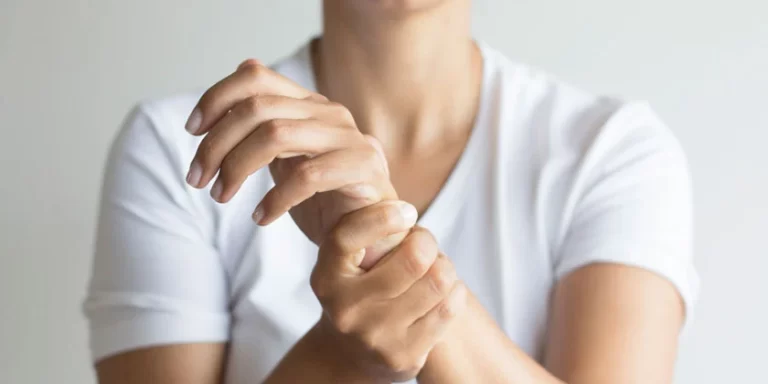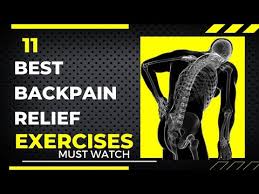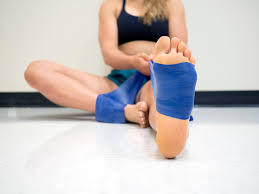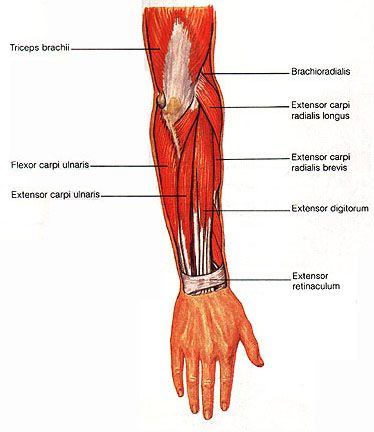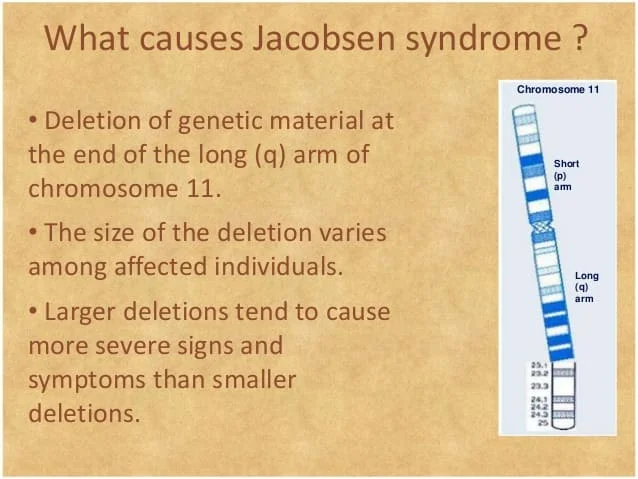Buttock Pain When Sitting and Lying Down
Table of Contents
Introduction:
A common but sometimes diagnosed problem is buttock pain that gets severe when you sit or lie down. Many people find that their buttocks hurt while they’re at rest, especially if they’re under strain for long periods. This kind of pain can be anything from a little ache to a strong or radiating feeling that interferes with sleep and everyday activities.
Chronic buttock pain may first appear like a minor irritation, but it may indicate underlying disorders that impact the muscles, nerves, joints, or bones. The first step to successful therapy and long-lasting relief is comprehending the potential reasons.
Causes of Buttock Pain:
Numerous underlying disorders can cause buttock pain when sitting and lying down, but the most frequent ones involve the muscles, nerves, or joints in the lower back and pelvis. Sharp, radiating pain from the lower back down the buttocks and down the leg, particularly when seated, is a common symptom of sciatica, which is caused by compression or irritation of the sciatic nerve.
When the piriformis muscle aggravates the sciatic nerve, it can result in piriformis syndrome, which is characterized by intense, agonizing pain in the buttocks. Inflammation of the bursa close to the sitting bones, known as ischial bursitis, causes localized pain that gets worse with extended sitting. Pain can also be caused by muscle strain or gluteal tendinopathy from overuse or injury, especially while lying on the side that is impacted. Herniated discs, coccydynia, age-related degenerative disc degeneration, and sacroiliac joint dysfunction are further reasons. Determining the precise reason is essential for symptom management and therapy selection.
Symptoms of Buttock Pain:
Depending on the underlying reason, buttock pain can vary in nature and degree. Typical signs and symptoms include:
- Sharp pain or aching in one or both buttocks.
- Sitting or lying down causes pain that gets more severe, especially on hard surfaces.
- Gluteal muscle stiffness or rigidity.
- Sciatica-like pain that radiates down the leg.
- Burning, tingling, or numbness in the lower limbs or buttocks.
- Sleep pain, particularly while lying on the side that is impacted.
- Pain that becomes worse when you move more, such as when you walk, climb stairs, or rise after sitting.
- Tenderness to the touch in particular places, including the lower back or the area around the sit bones.
- Reduced hip or lower back range of motion.
Treatment of Buttock Pain:
The source of buttock pain that becomes worse when you sit or lie down will determine how to treat it; however, there are a few efficient methods that can help ease pain and restore function:
- Modification of Rest and Activity: Avoid extended periods of sitting or lying on hard surfaces. To lessen the strain on the buttocks, use cushions or soft seats and switch positions often.
- Cold and Heat treatment: To reduce inflammation and enhance blood flow, apply an ice pack for the first 24 to 48 hours. Then, use heat treatment to relax tense muscles.
- Strengthening and Stretching Activities: Muscle tension can be released with mild piriformis, hamstring, and gluteal stretches.
- Medications for Pain Relief: Over-the-counter NSAIDs, such as naproxen or ibuprofen, can help control pain and inflammation.
- Physical treatment: To ease the strain on muscles and nerves, a therapist can help with manual treatment, posture correction, and focused exercises.
- Use ergonomic seats or pillows with tailbone slots to improve posture and ergonomics. To prevent slouching and maintain your spine in alignment, adjust your sitting position.
- Medical Procedures or Injections: To lessen pain and inflammation in more severe or chronic situations, cortisone injections or nerve blocks may be suggested.
- Surgery: In rare cases, but perhaps in cases where conservative therapy is ineffective, such as severe herniated discs or structural problems, surgery may be necessary.
It’s critical to treat the pain as soon as possible and adhere to a regular treatment regimen since early intervention frequently results in a speedier recovery.
Exercises for Buttock Pain:
Seated Butterfly Stretch:
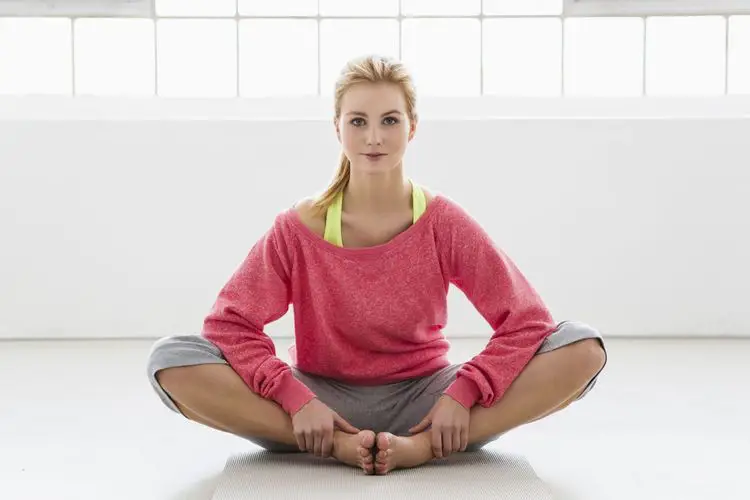
A mild yet effective exercise that works the inner thighs, hips, and lower back is the sitting butterfly stretch. It includes sitting on the floor with your knees bent outward and your feet squeezed together, forming your legs into the shape of a butterfly wing. This stretch helps relieve tension in the hip and groin area, which can lead to buttock pain while sitting or lying down.
It does this by gently pushing the knees toward the ground while maintaining a straight back. The sitting butterfly stretch is a useful supplement to any regimen meant to alleviate lower body pain since it may increase hip flexibility, decrease stiffness, and encourage improved posture when performed regularly.
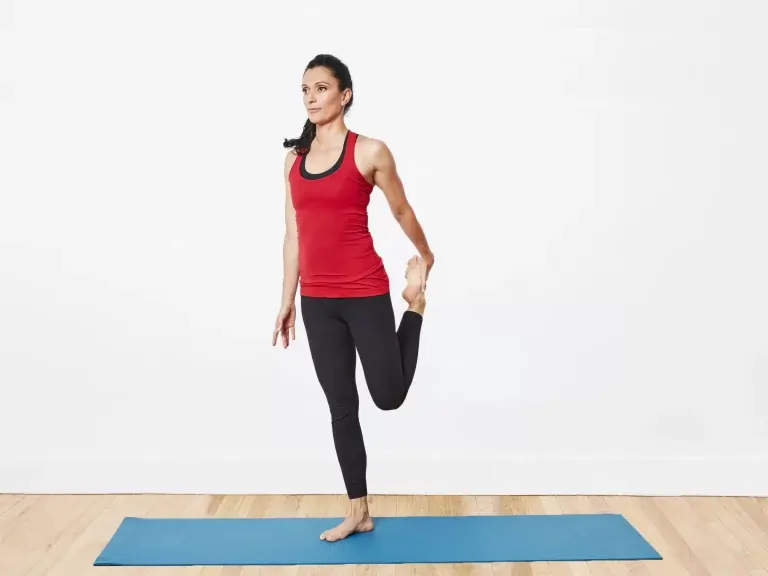
A quick and easy workout that works the muscles at the front of your leg is the quadriceps stretch. This stretch is done by standing up straight and bending one leg such that the heel is close to the buttocks. The front of your thigh ought to feel a little tug. Particularly following leg-related physical exercise, this stretch helps increase flexibility, lessen muscular tension, and avoid injury.
Bridge:
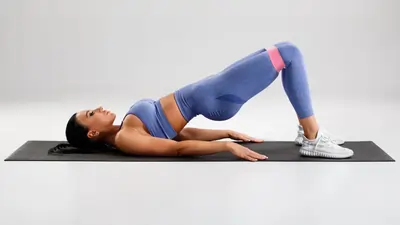
Targeting the glutes, lower back, and core muscles, the bridge is a stretching and strengthening exercise. Your arms should remain by your sides. Lift your hips off the floor by pressing through your heels until your body is in a straight line from your shoulders to your knees. At the apex, tighten your glutes and hold for a few seconds before bringing yourself back down gradually.
Sit-to-Stands:
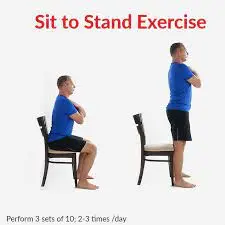
A functional exercise, sit-to-stands, improves balance and mobility while strengthening the legs, especially the quadriceps, hamstrings, and glutes. To begin this exercise, place your feet hip-width apart on the floor while seated on a stable chair. For balance, hold your arms out in front of you or cross them over your chest. To completely stand up, push through your heels while bending slightly forward. After that, regulate your descent back down to a sitting posture. Repeat many times. Sit-to-stand exercises are particularly helpful for older persons to preserve their independence and avoid falls since they replicate daily motions.
Step-Ups:
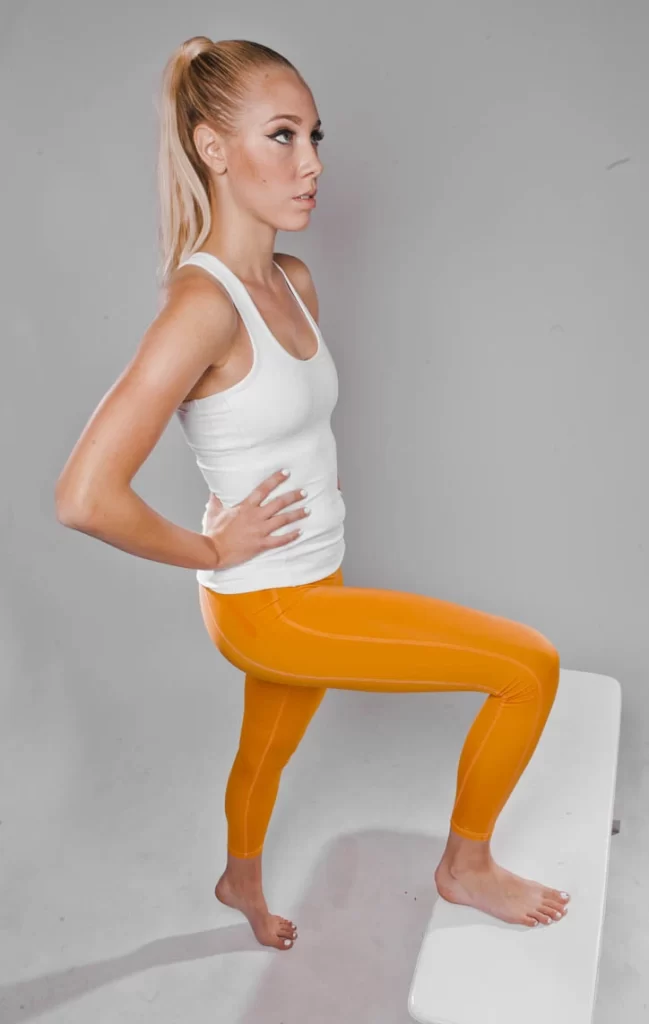
Lift your body by placing one foot firmly on the step and pressing through your heel to bring the other foot up to meet the first. Next, take a step back down with the same foot, then the other. After a few repetitions, swap legs. Step-ups are excellent for everyday tasks like walking uphill or climbing stairs since they help increase leg strength, balance, and coordination.
Single-Leg Resistance Band Deadlift:
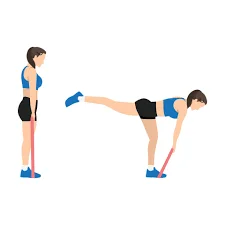
Maintain a straight back, raised chest, and slightly bent knees. To go back to standing, push through your heels after lowering your body while keeping the band taut by hingeing at the hips. This version is perfect for enhancing posture, hip stability, and general strength because it closely resembles the classic deadlift.
Side Leg Raise:
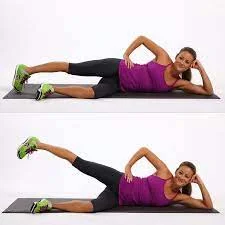
The side leg raise is a straightforward yet powerful exercise that works the gluteus medius, hips, and outer thighs. This workout involves lying on your side with your legs straight out and piled on top of one another. Without turning your hips, slowly raise your upper leg and then carefully bring it back down. After a few repetitions, switch sides.
Standing Hip Extension:

A bodyweight exercise that tones the muscles in the lower back, hamstrings, and glutes is the standing hip extension. To do this exercise, stand up straight, place your feet hip-width apart, and support yourself by holding onto a wall or chair. Without arching your back or bending your knee, shift your weight on one leg and stretch the other leg straight behind you. At the peak of the exercise, tighten your glutes, and then go back to where you were before. Before swapping, perform several repetitions on one side. This workout enhances lower-body strength, posture, and hip mobility.
Piriformis Stretch:
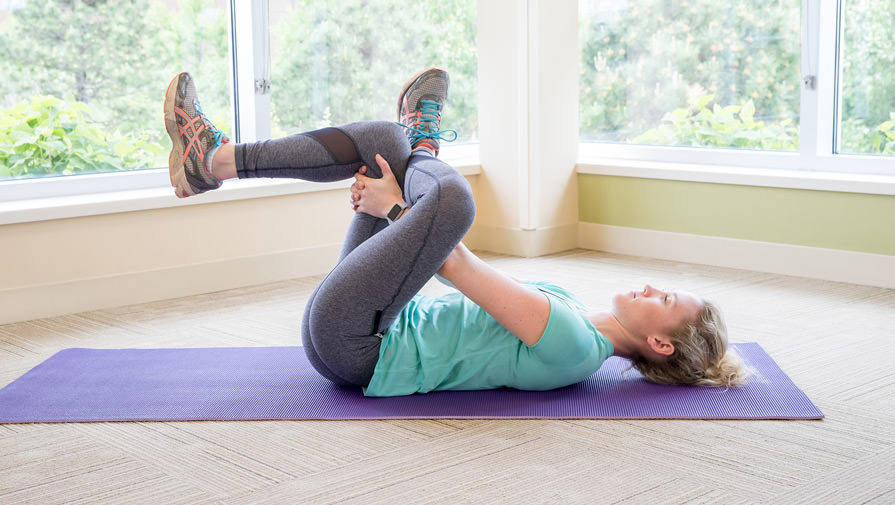
The piriformis muscle, which is deep in the buttocks and can cause sciatic pain when it is tight, is the goal of the piriformis stretch. Take hold of the lower leg’s thigh and slowly draw it up to your chest until the crossing leg’s buttocks start to expand. This stretch eases sciatica or piriformis syndrome pain, increases flexibility, and relieves tension.
Figure Four Stretch:
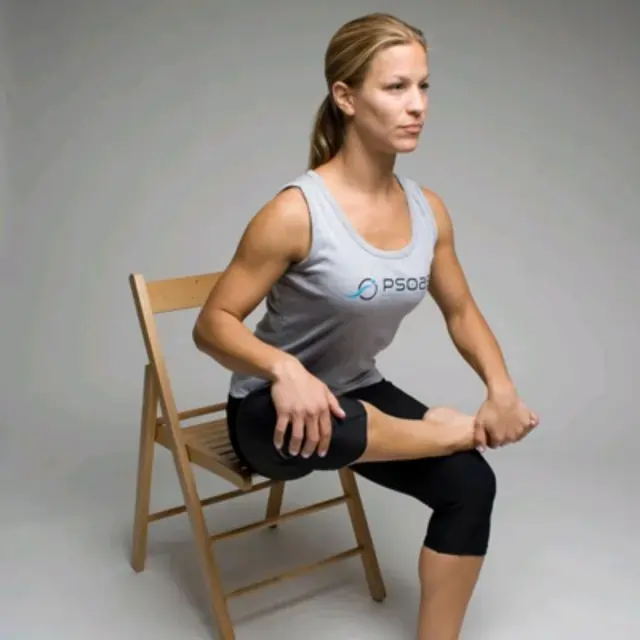
An excellent exercise for releasing tension in the hips, glutes, and piriformis muscle is the figure-four stretch. Make a “4” shape by crossing one ankle over the other knee. Gently pull the lower leg’s thigh toward your chest by reaching through the opening and grabbing it. After 20 to 30 seconds of holding the posture, switch sides. This stretch is very beneficial for increasing hip mobility and relieving buttock pain.
Hamstring Stretch:
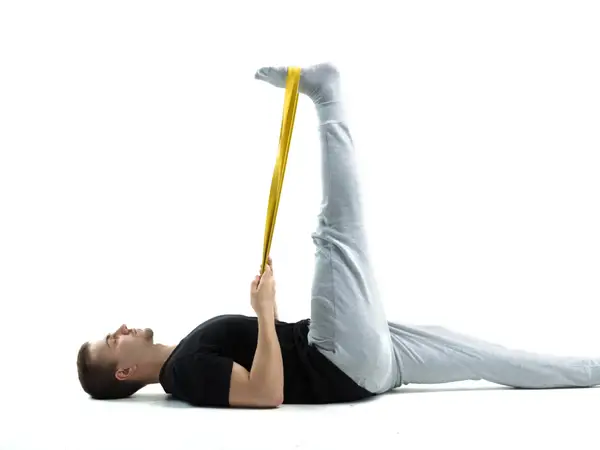
The hamstring stretch helps release tension in the lower back and buttocks by focusing on the muscles at the rear of your thighs. After 20 to 30 seconds of holding, swap legs. This stretch promotes better posture and mobility while increasing flexibility and decreasing tension.
Cat-Cow Stretch:
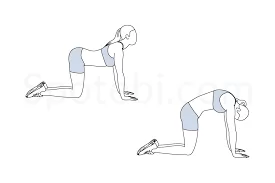
The cat-cow stretch is a soft, flowing motion that helps to improve posture, release tension in the back and buttocks, and promote spinal flexibility. Starting on your hands and knees in a tabletop posture, place your knees beneath your hips and your wrists beneath your shoulders to begin this stretch. Next, exhale while you bring your tummy into your spine (cat position), tuck your chin to your chest, and round your spine. For a few breaths, keep switching between these two postures.
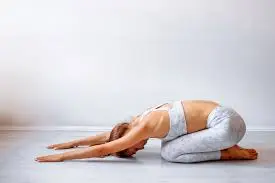
A mild resting stretch that works the thighs, buttocks, hips, and lower back is called “Child’s Pose.” Kneel on the floor with your big toes touching and your knees stretched wide to execute this position. Lower your body forward and spread your arms out in front of you on the floor once you’ve sat back onto your heels. Put your forehead down on the mat and let your whole body unwind. Breathe deeply while you hold the position for 30 seconds to several minutes.
Pigeon Pose:
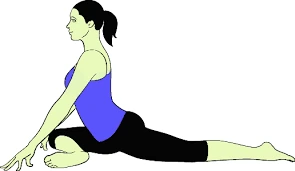
The glutes, piriformis, and hip flexors are all worked in Pigeon Pose, a deep hip-opening stretch. Start in a downward dog or tabletop posture to do this pose. After 20 to 30 seconds of holding the stretch, switch sides. Pigeon Pose helps increase flexibility, ease hip stiffness, and relieve buttock pain.
Clamshell Exercise:
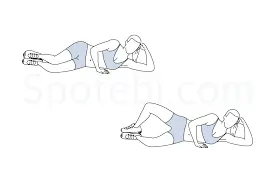
A strengthening exercise that helps support the hips and pelvis, the clamshell exercise works the gluteus medius. Maintain an engaged core and a supported head. Then, carefully bring it back down. After a few repetitions, switch sides. Particularly helpful for reducing buttock pain, increasing hip stability, and avoiding injuries from weak glutes is this exercise.
Conclusion:
In conclusion, everyday comfort and mobility might be greatly impacted by buttock pain when sitting and lying down. It frequently happens as a result of joint problems, nerve pain, or muscle tension.
Effective therapy requires determining the underlying reason. Pain can be reduced and recurrence can be avoided by using mild stretches, strengthening exercises, and good posture practices. It is advised to speak with a healthcare provider if the pain continues or gets worse to guarantee the right diagnosis and treatment.
FAQs
You can attempt a mix of lifestyle modifications, exercise, and posture corrections to avoid or alleviate the pain that comes with extended sitting. This includes utilizing cushions, taking regular pauses to walk about, adjusting your sitting position, and combining stretches and exercises that focus on the area that is affected area.
Several varying-in-severity conditions can cause buttock pain. It is preferable to consult a physician if the pain worsens over time, doesn’t go away, or is accompanied by other symptoms.
Myofascial pain syndrome, which affects the huge gluteus maximus and gluteus medius muscles of the buttocks, is a prevalent cause of buttock muscle pain.
Rectal morphine is a suppository that is inserted into the rectum. Typically, it is placed every four hours. Rectal morphine should be taken daily at around the same time. Pay close attention to the instructions on your prescription label, and ask your pharmacist or doctor to clarify any parts you don’t understand.
The examiner places the piriformis on a stretch that compresses the sciatic nerve by stabilizing the hip and applying downward pressure to the knee to internally twist and adduct the hip.
Try self-massage techniques with a tennis ball or foam roller to ease buttock pain. Tension and knots can be released by applying pressure to trigger points and employing deep strokes. Additionally helpful is stretching, particularly piriformis stretches.
Hip, or upper leg pain or numbness, is are symptom of Piriformis syndrome. Injury, edema, muscular spasms, or scar tissue in the piriformis might be the cause of the problem. With rest and basic therapies, the majority of episodes resolve in a few days or weeks.
Several varying-in-severity conditions can cause buttock pain. It is preferable to consult a physician if the pain worsens over time, doesn’t go away, or is accompanied by other symptoms.
References:
- Bridges. (n.d.-c). [Video]. Hingehealth. https://en-gb.hingehealth.com/resources/articles/buttock-pain-when-sitting-and-lying-down/
- Ames, H. (2025b, January 6). What causes buttock pain when sitting? https://www.medicalnewstoday.com/articles/pain-in-bottom-when-sitting
- Watson, S. (2024, June 13). What’s causing this pain in my buttocks? Healthline. https://www.healthline.com/health/pain-in-buttocks
- Healthy Bodies Physiotherapy. (2022b, January 14). Buttock pain when sitting. Physiotherapy Services Cheltenham. https://www.healthybodiesphysiotherapy.com.au/buttock-pain-when-sitting/
- Dpt, K. G. P. (2025, May 6). What causes buttock pain and how to relieve it. Verywell Health. https://www.verywellhealth.com/buttock-pain-6456216
